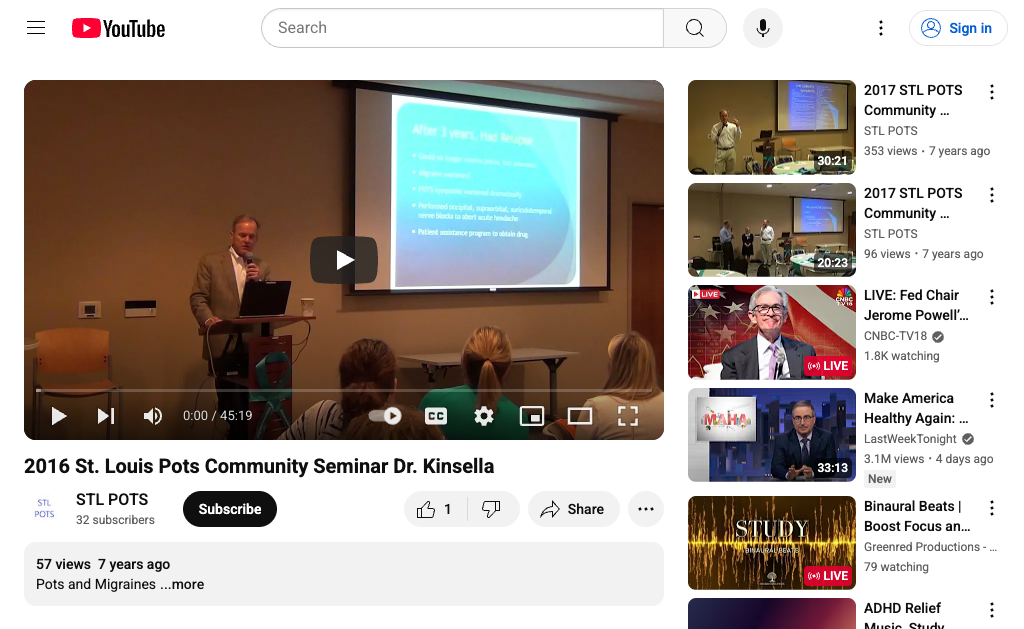2016 St. Louis Pots Community Seminar Dr. Kinsella
Dr. Kinsella reviews the strong association between POTS and migraine, noting that migraine is far more common in people with POTS than in the general population. The talk outlines overlapping mechanisms—autonomic dysregulation, altered cerebral blood flow, hyperadrenergic states, and common comorbidities such as joint hypermobility/EDS and mast cell issues—that may amplify migraine frequency and severity. Emphasis is placed on distinguishing orthostatic headache from migraine and on ruling out secondary causes (e.g., idiopathic intracranial hypertension or CSF leak) when red flags are present. Practical management starts with optimizing core POTS care (fluids, salt, compression, graded exercise, sleep and meal regularity, trigger avoidance, and limiting analgesic overuse). Acute migraine care may include NSAIDs, triptans, and antiemetics, while preventives are selected with attention to BP/HR and fatigue—examples discussed include beta‑blockers (with caution in low BP), tricyclics (amitriptyline/nortriptyline), topiramate, and in some cases botulinum toxin for chronic migraine. The seminar underscores individualized therapy, careful monitoring for medication side effects that can worsen orthostatic intolerance, and collaboration between cardiology/autonomic specialists and neurology for best outcomes.
